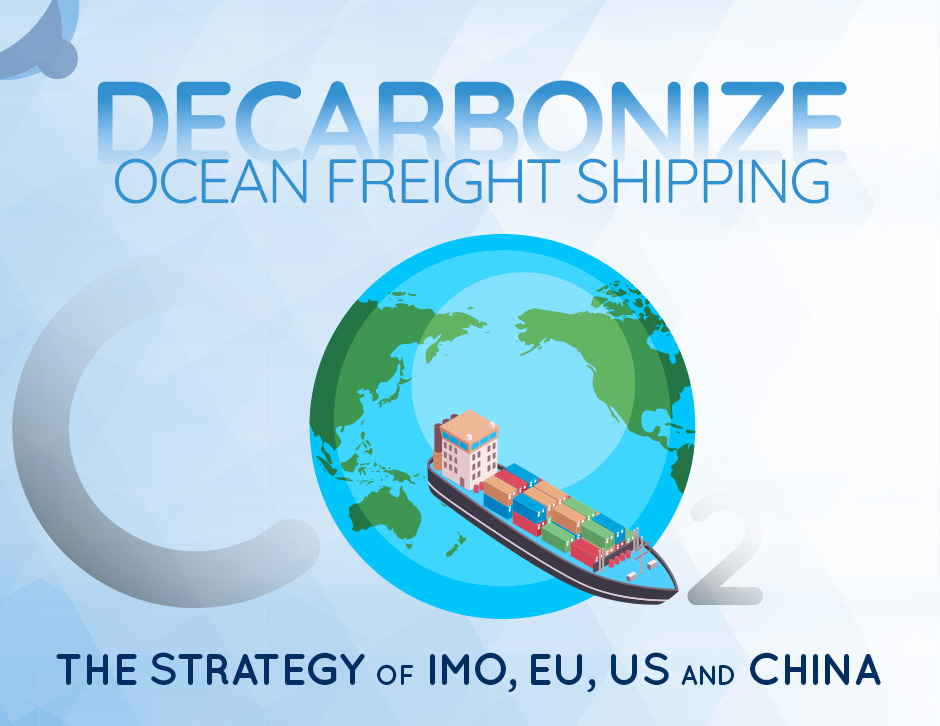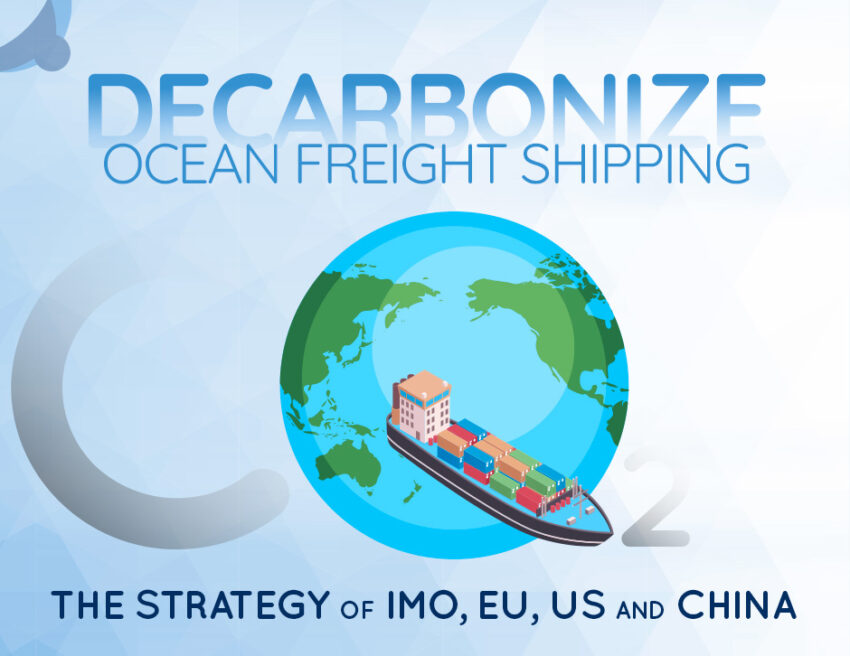Reducing greenhouse gas emissions in the maritime sector is more urgent than ever. With the ocean freight shipping industry responsible for a significant portion of global emissions, comprehensive regulations and policies are essential to drive the transition toward a greener future. A recent study by DNV sheds light on the current regulatory landscape, focusing on the strategies of the International Maritime Organization (IMO), the European Union (EU), the United States, and China. These four key players hold the power to shape the course of decarbonization in shipping, influencing the sector’s ability to meet ambitious climate goals.

The Importance of Regulation in Decarbonization of Ocean Freight Shipping
DNV’s ‘Maritime Forecast to 2050’ report identifies three critical factors that will determine the success of decarbonization efforts in the ocean freight shipping industry: policies and regulations, access to investors and capital, and the expectations of customers and ship owners. Among these, regulation is the cornerstone. Without robust and enforceable policies, the industry’s path to net zero emissions would be fraught with uncertainty and risk.
Timing is crucial. The availability of carbon-neutral fuels is expected to be limited, making it imperative for the maritime industry to explore all decarbonization options to achieve a 20% reduction in greenhouse gas emissions by 2030. The ultimate goal, set by the IMO, is to reach net zero emissions by 2050. The regulatory frameworks established by the IMO, EU, US, and China will play a pivotal role in determining whether these targets are met.
IMO’s Ambitious New Strategy
Last year, the IMO introduced significant regulatory developments aimed at accelerating the decarbonization of the container shipping sector. These new regulations are vital, as maritime transport is inherently international, requiring global objectives and consistent regulations to be effective.
The IMO’s revised strategy marks a substantial shift from its previous goals. Initially, the organization aimed for a 50% reduction in emissions by 2050, using 2008 levels as a baseline. However, the updated targets are far more ambitious, calling for a 20% reduction in emissions by 2030, 70% by 2040, and net zero emissions by 2050.
Additionally, a key element of the IMO’s strategy is the commitment to adopt zero or near-zero emission alternative fuels by 2030. The organization has set indicative checkpoints for 2030 and 2040 to monitor progress. The IMO’s ultimate goal is for zero or near-zero greenhouse gas-emitting technologies, fuels, and energy sources to comprise at least 5% of the energy used by international shipping, with a target of reaching 10%.
The EU’s Leading Role on the Global Stage
The European Union has also made significant strides in regulating maritime emissions. One of the most notable developments is the inclusion of shipping in the EU Emissions Trading System (EU ETS) starting in 2024. This move will impose specific emission reduction requirements on ships, with targets becoming progressively stricter each year in line with the EU’s overall decarbonization goals.
Additionally, the EU has implemented the FuelEU Maritime initiative, which seeks to increase the use of sustainable alternative fuels in maritime transport and ports. Complementing this is the Alternative Infrastructure Regulation (AFIR), which promotes the installation of more refueling and recharging stations for alternative fuels. These measures underscore the EU’s commitment to leading global efforts in maritime decarbonization.
The US Roadmap: A Work in Progress
The United States’ approach to maritime decarbonization is somewhat less defined, as the country lacks a specific climate target in its national laws. However, the US rejoined the Paris Agreement in 2021, signaling a renewed commitment to reducing greenhouse gas emissions.
The absence of a domestic climate target may hinder international efforts to combat climate change, given the US’s significant influence in global trade and climate negotiations. Nevertheless, some progress has been made. The US State Department and the White House have issued a long-term strategy to achieve net zero emissions by 2050. Additionally, federal agencies have developed a roadmap to reduce emissions from the transport sector, including shipping, which was published in January 2023.
This roadmap outlines actions focused on research and innovation, commitments from both domestic and international stakeholders, and the development of an integrated approach to reducing maritime emissions.
China’s Crucial Role in Global Decarbonization
China, the world’s largest emitter of carbon dioxide, plays a critical role in global decarbonization efforts. As a member of the IMO, China has participated in the adoption of international regulations and targets for reducing emissions in shipping. Its collaboration is essential to ensure a coordinated global approach to maritime decarbonization.
China’s importance is further highlighted by the fact that it hosts the 10 largest ports in the world. Without China’s full participation in the transition to a low-carbon economy, achieving global climate targets would be nearly impossible. In 2020, China announced its 30-60 targets, aiming to peak carbon emissions by 2030 and achieve carbon neutrality by 2060.
In the maritime sector, China has expressed its intention to develop ships powered by electric energy and liquefied natural gas (LNG), among other initiatives. These efforts reflect China’s recognition of its role in the global decarbonization landscape.
Wrapping Up: The Path Ahead
The regulatory strategies of the IMO, EU, US, and China will shape the future of maritime decarbonization. As the industry strives to meet ambitious climate targets, these key players must continue to push for stronger, more effective regulations. By doing so, they will not only help reduce global temperatures but also ensure a sustainable future for the maritime sector and the planet.


